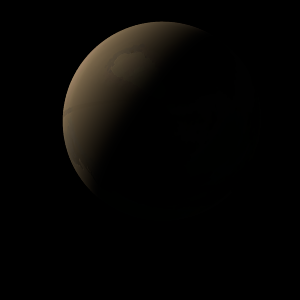|
|
Space Astro
|
Info for exoplanet "Tafe Gebe"
| Scientific (actual) data |
|---|
| Name | Kepler-466 b |
| Planet status | Confirmed |
| Radius | 0.254 |
| Orbital period | 51.0793 |
| Discovered | 2016 |
| Updated | 2021-02-05 |
| Tconj | 2455020 |
| Publication | Announced on a website |
| Detection type | Primary Transit |
| Alternate names | 2MASS J19423569+4829440 b, K00112.01, KIC 10984090 b, KOI-112 b, KOI-112.01, WISE J194235.68+482943.9 b |
| Star name | Kepler-466 |
| Right ascension | 295.65° |
| Declination | 48.5° |
| Mag j | 11.698 |
| Mag h | 11.402 |
| Mag k | 11.367 |
| Star distance | 436 |
| Star metallicity | -0.01 |
| Star mass | 1.04 |
| Star radius | 1.05 |
| Star age | 3.47 |
| Star temperature | 5927 |
| Star alternate names | 2MASS J19423569+4829440, KIC 10984090, KOI-112, WISE J194235.68+482943.9 |
| Wikipedia article | Kepler-466 b |
Back
| |
| Fictional info (?) |
|---|
| Suggested name | Tafe Gebe |
| Planet type | Cold planet |
| The planet telescopically displays the complete range of phases, similar to Venus and the Moon, as it moves in its inner orbit relative to Kepler-466, which reoccurs over the so-called synodic period approximately every 203 days. |
| Atmosphere | Carbon dioxide | 81% |
| Hydrogen chloride | 14% |
| Ethane | 4.7% |
| Nitrogen | 0.0019% |
| Atmospheric pressure | 2.4 bar |
 |
| No known satellites |
| Google search for Tafe gebe |
|
Website by Joachim Michaelis
|
|
|
|